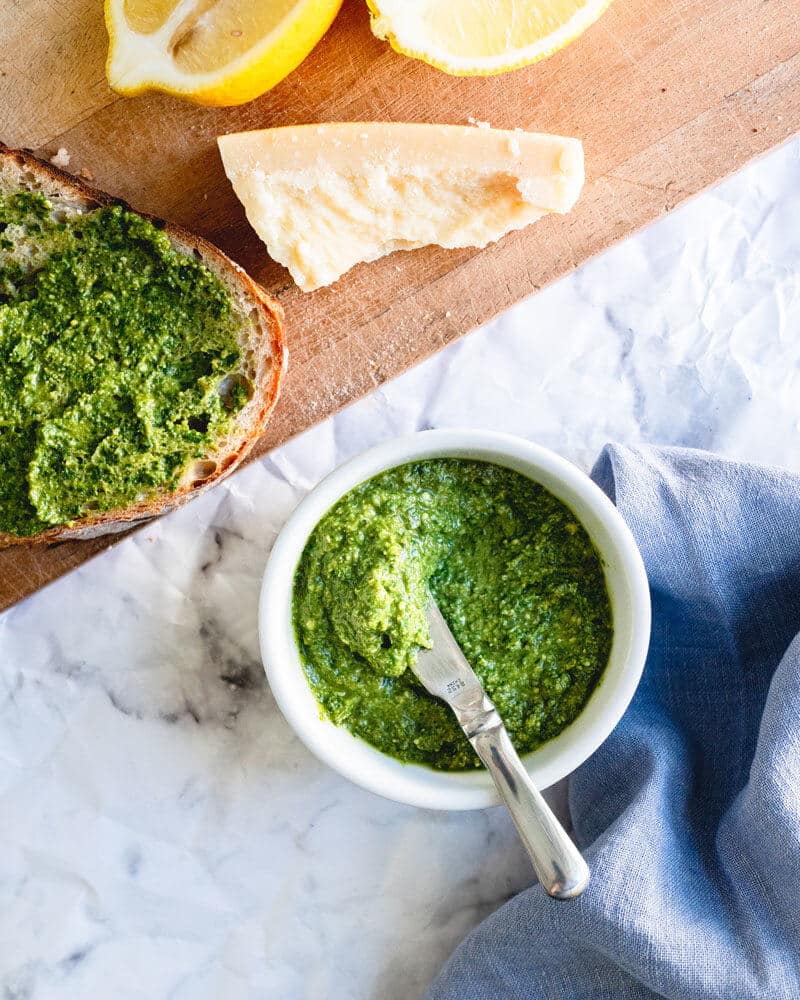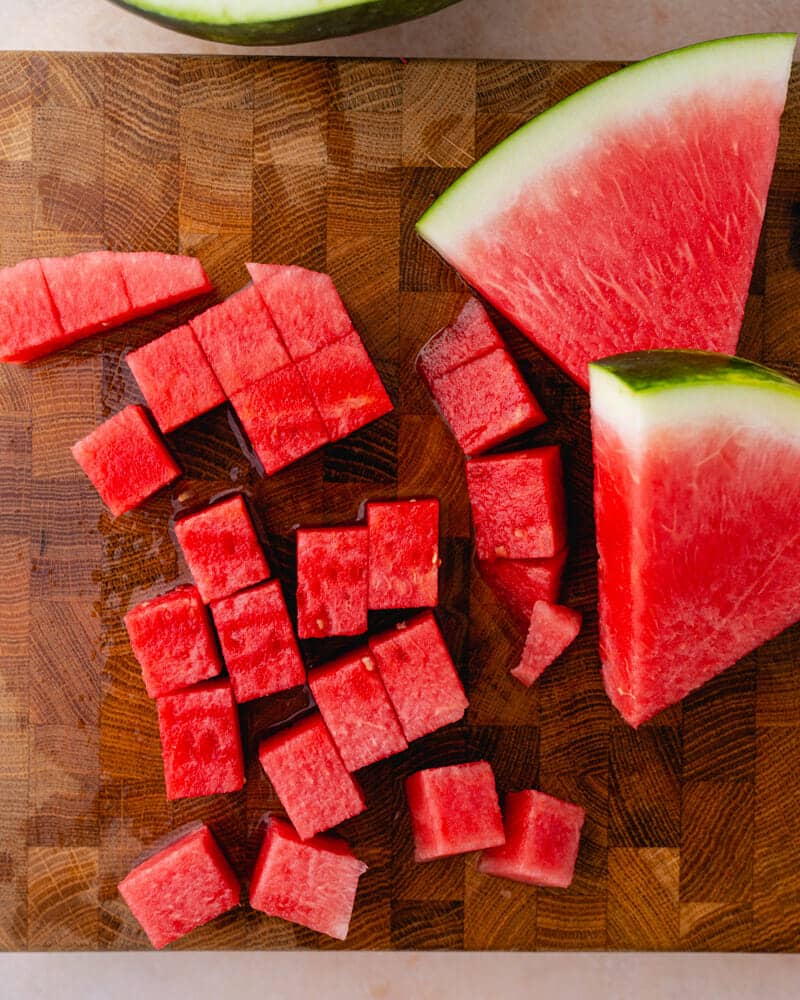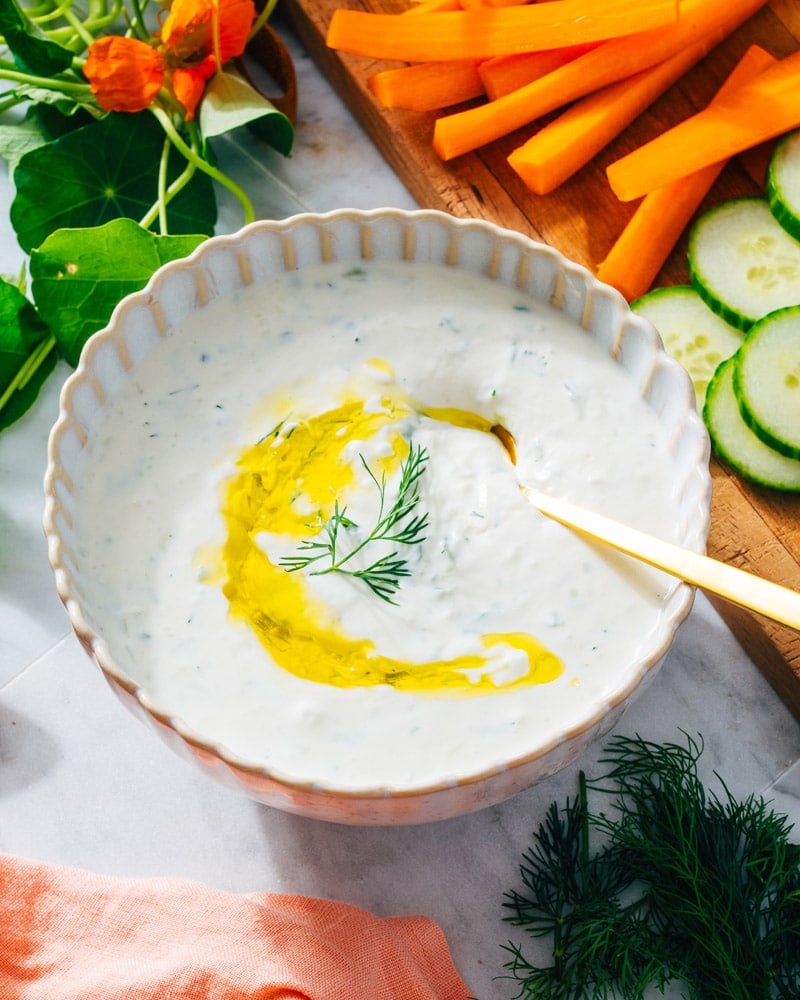This basil pesto recipe is a flavor-packed classic Italian sauce starring basil, pine nuts, olive oil, and Parmesan cheese!

Got a load of fresh basil? Then run, don’t walk, to make a batch of this basil pesto recipe! It’s savory, garlicky, creamy, peppery, and you can slather a smear on anything. Is there anything better? Use it to take pasta from plain to magnificent, or throw it on a pesto pizza for maximum flavor. If you’re never made basil pesto at home: now is the time!
What’s in this basil pesto recipe?
Basil pesto is a sauce that originates in Italy (the city of Genoa, more specifically). The word pesto comes from an Italian word that means “pounded” or “crushed”. A pesto can refer to any type of sauce that is crushed, but pesto alla genovese, the version of pesto from Genoa, is the most popular version. The traditional ingredients in basil pesto are fresh basil leaves, pine nuts, garlic, Parmesan cheese, olive oil, and salt.
Pesto ingredient notes
Pine nuts are traditional in basil pesto, but they can be pretty expensive here in the US. In this pesto recipe, you can use cashews or walnuts as a substitute. We’ve tested and both turn out fabulously! You can use any type of nut you prefer. Our favorite is pine nuts because they make for the best classic flavor. But the cashew version is delicious, and we always have cashews around.
Another feature we added to our basil pesto recipe is a squeeze of lemon juice! It helps to brighten the flavors and takes this sauce to a while new level.

How to make this pesto recipe
Basil pesto is traditionally made in a mortar and pestle to grind the ingredients together, but modern recipes typically use a blender or food processor. You’ll simply blend up all ingredients, then add the olive oil until the sauce becomes creamy.
Here’s how to make basil pesto:
- Toast the nuts for a few minutes in a dry skillet, stirring constantly, until fragrant.
- Place the nuts, Parmesan cheese, and garlic in a food processor and blend until finely chopped.
- Add fresh basil leaves, lemon juice and salt. Start the food processor and add the olive oil in a steady stream. Add a bit more olive oil to bring to the desired consistency, if necessary.
Pesto variations
There are many ways to change up pesto! Here are a few variations on basil pesto for you:
- Easy Vegan Pesto or Vegan Cashew Pesto: Want pesto without cheese? These pesto recipes use tricks to substitute a cheesy flavor.
- Walnut Pesto or Cashew Pesto: Swap out the pine nuts for a delicious spin!
- Kale Pesto: You can substitute kale for basil in the off season! This spicy variation is also tasty.
- Arugula Pesto: Spicy arugula also works as a substitute for basil!
- Basil Sauce: This sauce is similar to pesto, without the nuts and cheese! It’s remarkably good.

How to freeze pesto
Here’s an important note! The best way to store homemade pesto, if you’re not going to eat it all at once, is to freeze it. Here’s how to freeze basil pesto:
- Pour the pesto into an ice cube tray and pop in the freezer.
- Once frozen, remove the cubes and place them in a freezer safe sealed container.
- When you’re ready to eat, you can pop out small servings of pesto. Place them in a container and allow to come to room temperature on the counter or in the refrigerator.
Growing and storing basil
Ever grown basil? Basil is easy to grow at home: it’s very hardy as long as you place it in full sun! Basil adds an aromatic flavor to such a wide variety of recipes. If you’re looking to grow your own basil plant, go to this step-by-step guide, How to Grow Basil.
When you harvest branches of your basil plant and bring them inside, they’ll wilt after about an hour unless you follow this trick! Place a little water in the bottom of a large ball jar, then place the stems inside, cut side down. Add the top and it will stay fresh for 3 to 5 days in the refrigerator! (See How to Store Basil for more.)

Ways to use pesto
Once you’ve made your basil pesto: what to do with it? There are thousands of recipes for how to use basil pesto online and in cookbooks. To help you sort through the clutter, here are our best recipes with pesto:
- Pizza: Slather pesto on on pizza dough to make Pesto Pizza
- Pasta: Add a swirl of basil pesto to make Pesto Pasta, Pesto Spaghetti, Pesto Tortellini, Pesto Gnocchi, Pesto Mac and Cheese, or Pesto Cavatappi
- Pasta Salad: Go for bright green Pesto Pasta Salad
- Salmon: Bake up roasted Pesto Salmon
- Shrimp: Make Shrimp Pesto Pasta or Easy Pesto Shrimp
- Aioli: Add to mayo for a creamy Pesto Aioli
- Salad Dressing: Try Pesto Salad Dressing
This basil pesto recipe is…
Vegetarian and gluten free. For vegan, plant-based, and dairy-free, use Vegan Pesto.
Print
Basil Pesto Recipe
-
 Prep Time: 5 minutes
Prep Time: 5 minutes -
 Cook Time: 0 minutes
Cook Time: 0 minutes -
 Total Time: 5 minutes
Total Time: 5 minutes -
 Yield: Heaping 1 cup (about 18 tablespoons)
Yield: Heaping 1 cup (about 18 tablespoons)
Description
This basil pesto recipe is a flavor-packed classic Italian sauce starring basil, pine nuts, olive oil, and Parmesan cheese!
Ingredients
- ½ cup raw unsalted pine nuts, cashews, or walnuts*
- ½ cup grated Parmesan cheese
- 2 medium garlic cloves
- 2 cups loosely packed fresh basil
- 1 tablespoon fresh lemon juice
- ¼ teaspoon kosher salt
- ½ cup olive oil, plus additional as needed
Instructions
- In a small dry skillet, toast the nuts over medium high heat, stirring constantly, for about 2 to 3 minutes. Remove the nuts to a bowl and allow them to cool slightly. (This step is optional, but brings out a more robust flavor in the nuts.)
- In food processor**, combine the nuts, cheese, and peeled garlic. Process until finely ground, 20 to 30 seconds.
- Add the basil, lemon juice and kosher salt. Turn on the food processor and gradually pour in the olive oil. Once combined, turn off the food processor. Blend in a bit more olive oil if desired, to achieve a looser texture. Stores for about 1 week in the refrigerator and several months frozen.
Notes
*Pine nuts are traditional, but can be expensive. We’ve tested both cashews and walnuts and they have great flavor. Since we often have these stocked in our pantry, we use these variations more often than pine nuts.
**You also can do the same method using a mortar and pestle, adding the basil leaves gradually and crushing them against the sides of the mortar.
 Category: Sauce
Category: Sauce Method: Blended
Method: Blended Cuisine: Italian
Cuisine: Italian
Keywords: Basil pesto, basil pesto recipe, Pesto recipe, Pesto





















